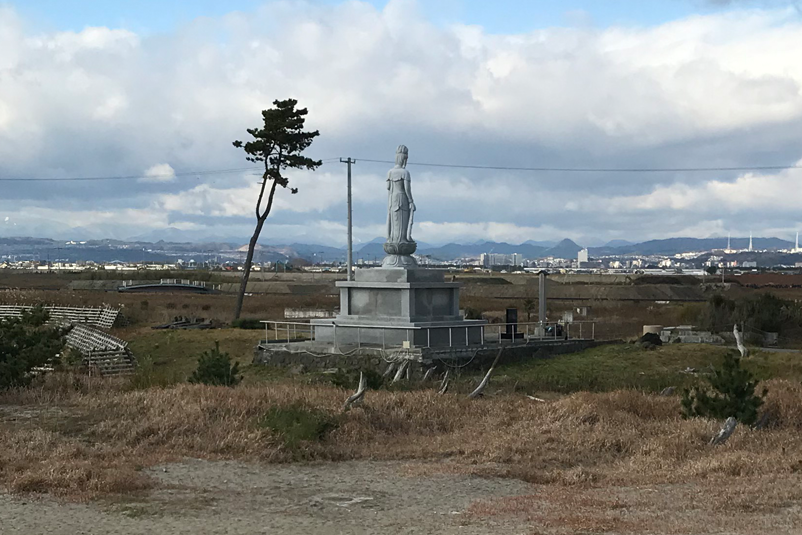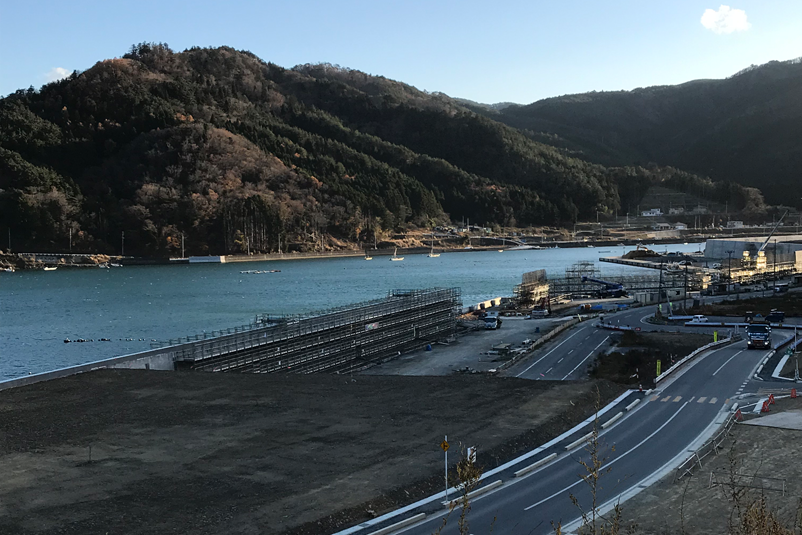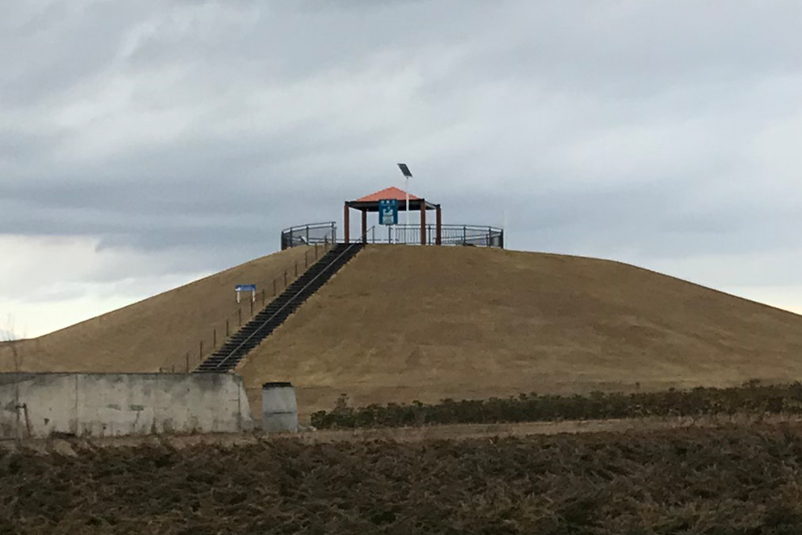It’s hard to believe eight years has passed since the Great East Japan Earthquake occurred that devastated so much of Japan. In November, I was very fortunate to participate in a United Nations International Strategy for Disaster Reduction meeting in Sendai, which included two days of site visits to areas hit by the tsunami.
These site visits were profoundly moving. We heard from survivors on how the tsunami impacted on their communities and what steps they have taken, and continue to take, to recover. It was why they are telling the story and their message of hope that compels me to share their messages with the Australian emergency management community; so we may learn and improve systems so these rare but potentially severe-to-catastrophic events do not result in the loss of lives in Australia, or Australians travelling overseas.

The God of Mercy memorial stands 13.7 metres, the height of the tsunami. The memorial is in the area where the Arahama Elementary School withstood the tsunami and served as an evacuation point, which saved all the students and some of the community. Image: Jane Sexton
Geoscience Australia recently released the Probabilistic Tsunami Hazard Assessment that estimates the frequency that tsunamis of any given size (wave height) occur in water depths of 100 metres around Australia. In that assessment, wave heights were routinely estimated at values on the same scale as the 2011 tsunami. Given sections of the Sendai coastline experienced a wave height of 13.7 metres, it is sobering to reflect that Australia could experience a tsunami with a similar wave height. I can now put these estimates in perspective. Images of the day are significant enough, but it is the stories of those who lost family and friends that convey more meaning than images alone. I was stunned by the courage of people to share their story and I learnt that storytelling is part of their process of healing.

The government has built sea walls to protect coastal communities. The tsunami reached 21 metres high in this area. Image: Jane Sexton
The community is moving on, but they are not forgetting. Memorials mark the height of the tsunami and they carry the names of people who lost their lives. The Japanese community is motivated to share their stories so that the tsunami risk is reduced across the globe. I have summarised my observations and learnings shared by the community members that may be relevant to Australia:
- Disaster education is paramount, recognising that children educate their parents too.
- Knowing the location of evacuation points is critical for all members of the community. There was a tragic example where a community failed to agree on an evacuation point and the confusion on the day lead to many deaths.
- Communities and schools undertake regular tsunami drills so that community members know the evacuation points and actions to take. They also do drills for earthquakes.
- Tsunamis can amplify in rivers and bays. There is an increased understanding to retreat to high land rather than retreating further inland.
- Plans need to be flexible. Tsunamis behave in unexpected ways and are unlikely to match the current plan. For example, one community knew a tsunami was coming and were waiting for typical indicators of the river retreating. This didn’t happen.
- The risk of tsunami is accepted but people did not expect the tsunami to be so big. Prior planning did not consider an event of such scale and communities were less prepared. Such large-scale events have caused scientists to reconsider the potential for large events occurring, which is a major impetus for Geoscience Australia to update the national offshore Probabilistic Tsunami Hazard Assessment. There are uncertainties as to what is considered the ‘worst case’ and it is critical to acknowledge that an event will be different to the one that plans are based on.
- Warnings are not perfect (and we should not expect them to be) especially for this type of hazard.
- Tsunami arrival in some locations was 40–50 minutes after the earthquake event, yet people still lost their lives. Australia receives at least a 90-minute warning; the closest source of earthquake being the Puysegur Trench at the south of New Zealand.
- Most communities in Sendai felt the ground shaking from the earthquake so knew a tsunami was possible. This typically is not the case for large-magnitude earthquakes occurring in the subduction zones that surround Australia.
- Australians travelling overseas need to be tsunami-aware. Education in Australia needs to include the domestic and international risks posed by tsunamis.
- Sharing stories for future generations plays an important role in understanding tsunami risk. Given the short-recorded history of tsunamis in Australia, there is a need to preserve Australian Indigenous oral histories to uncover stories of tsunami events that will contribute to the national understanding and awareness of the tsunami hazard.

A ‘Hills of Hope’ near Sendai airport. The path at the left provides better access for disabled people. The hill is 11 metres high and exceeds the height of the tsunami recorded in this area. Image: Jane Sexton
Recovery is a long and expensive process. The Japanese government has raised the heights of sea walls; in some locations to over seven metres. There is community acknowledgement that the walls offer a level of protection to more frequent, less extreme events, but may not offer total protection from an event of the scale of the March 2011 tsunami. The government has also constructed vertical evacuation points. For example, the 11 ‘Hills of Hope’ constructed near the Sendai airport are designed at a height beyond the tsunami water level experienced during the 2011 event. The design includes access for disabled people as well as solar panels so that evacuees can recharge mobile devices to let their family and friends know they are safe. The government has also determined where communities may remain and rebuild and where they cannot. Many families have strengthened their homes, for example raising them off the ground, to cope better in future events.
As we head to the coast, either in Australia or overseas, be tsunami-aware. Take note of your surroundings and where higher ground is and how to access it. Heed any natural warning signs and any tsunami warnings issued by local authorities.


